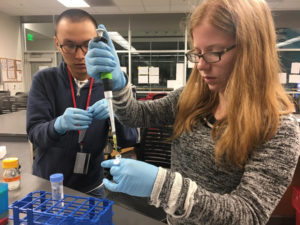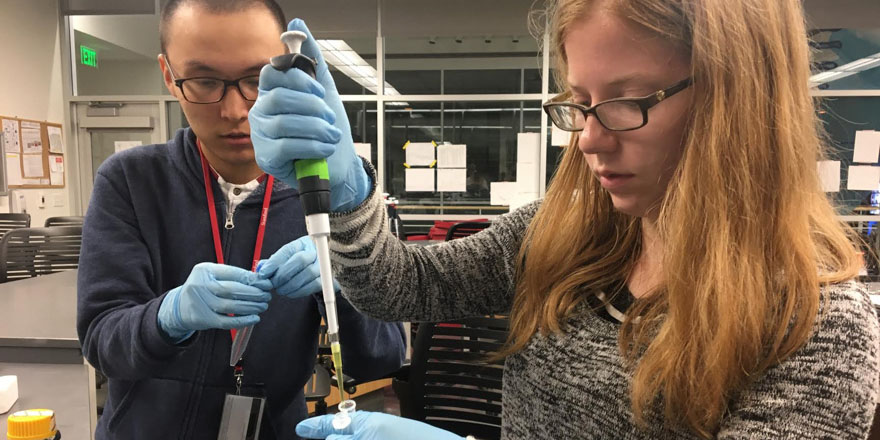
The science fiction-esque concept of making DNA in outer space may soon become a reality, thanks to Stanford Student Space Initiative (SSSI)’s new Biology Team. The small, recently-founded subgroup within SSSI is pushing the frontiers of biological engineering by constructing a space-ready DNA synthesizer that may launch into orbit within a year.
SSSI was founded in 2013 to foster student-driven innovation focused on outer space. It has since gained national and international recognition for its projects, which include a zero-gravity experiment run with NASA and record-breaking high-altitude balloon technology. SSSI is Stanford’s largest project-based student group, according to the organization’s website.
The Biology Team began last September as SSSI’s sixth official team. At the group’s first few meetings in fall quarter, new members — most of whom were freshmen — learned about DNA and basic lab skills. Less than six months later, the students have nearly finished building the individual components of the DNA synthesizer.
According to Biology Team Co-Lead Alan Tomusiak ’19, the group hopes to have finished the design, tested the product and integrated the separate pieces by the end of spring quarter.
The synthesizer will be controlled remotely: The device receives electronic signals and turns them into commands to construct DNA with a precise sequence of nucleotides.
“There are a couple parts about this project that are really unique, that nobody’s ever done before,” said Co-Lead Richard Fuisz ’17. “No one has ever used enzymes to synthesize DNA at any sort of scale. It’s very difficult to do controlled and accurate synthesis.”
Because the synthesizer is meant to work in outer space, students must invent ways for the synthesizer to check its own work and determine whether the DNA strand functions correctly while in orbit. Enzymatic DNA creation is already cutting-edge work on Earth, and as Fuisz emphasizes, “doing anything in space is a thousand times harder.”
If successful, the project’s long-term implications could be significant. Creating DNA in space would allow synthesis of critical pharmaceuticals, a large leap toward enabling humans to live in space in the distant future.
Right now, the SSSI Biology Team members have their sights set on more immediate goals: They hope to have their prototype in in space soon, either aboard the International Space Station or in sub-orbit. Once the prototype is finished, they hope to improve the design and ensure that the product is replicable.
“As a somewhat jaded senior, it’s refreshing to see freshman and sophomores, or even just newer members to the group come in,” said Co-Lead Michael Raitor ’17. “They’re just very excited to be building something new and to have a community that they share interests with.”
Contact Sierra Garcia at sgarcia3 ‘at’ stanford.edu.
